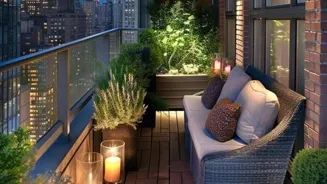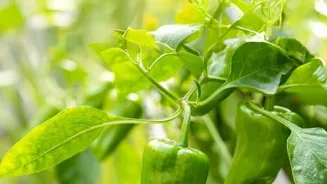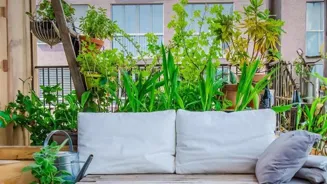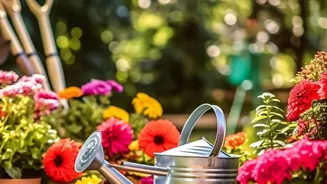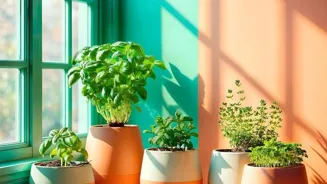Unveiling the Secrets of Thriving Urban Terrace Gardens in India - Dive into expert tips for a green paradise!
Mumbai, October 26 – In the bustling concrete jungles of urban India, terrace gardens are blooming
as oases of green, offering respite from the city's chaos. But nurturing a thriving terrace garden isn't just about scattering seeds; it's a blend of know-how and dedication.
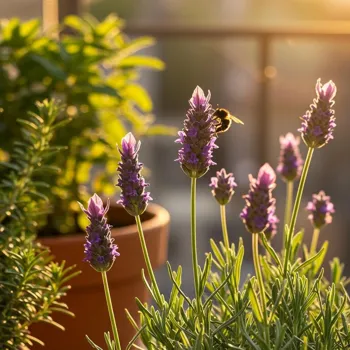
So, grab your gardening gloves, and let's delve into ten tips to transform your terrace into a flourishing paradise!
Plants thrive with sunlight; choose wisely for shaded terraces
Just like we need sunlight, plants need it too for photosynthesis. Before you start arranging your pots, watch how the sun moves across your terrace. Most plants need at least six hours of sunlight daily. If your terrace is shaded, choose plants that thrive in partial shade.
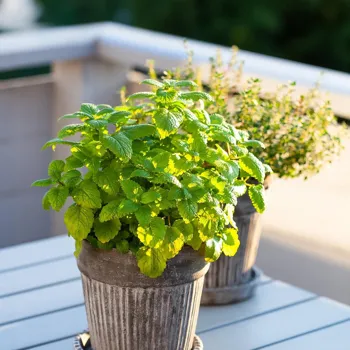
Look for varieties like leafy greens, herbs like mint and coriander, or flowering plants like impatiens. These can still bring a splash of green even with less direct sunlight. Remember, happy plants make a happy gardener!
Select lightweight pots with proper drainage for successful terrace gardening. Use well-draining potting mix
Selecting the right containers is crucial for your terrace garden's success. Opt for lightweight pots made of plastic, terracotta, or even recycled materials, especially if you're on a high-rise building.
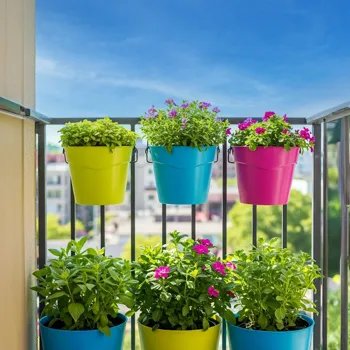
Make sure the containers have proper drainage holes to prevent waterlogging, which can lead to root rot. When it comes to soil, don't just use garden soil! It can be too heavy, compact, and poorly drained. Instead, use a well-draining potting mix specifically formulated for container gardening.
You can also create your own mix by combining garden soil, compost, and cocopeat or perlite for better aeration and drainage. Healthy soil means healthy plants!
Watering plants properly - an art, not a chore!
Watering is an art, not a chore! Overwatering is as harmful as underwatering. To know if your plants need water, stick your finger about an inch into the soil. If it feels dry, it's time to water. Water deeply until water drains out of the drainage holes.
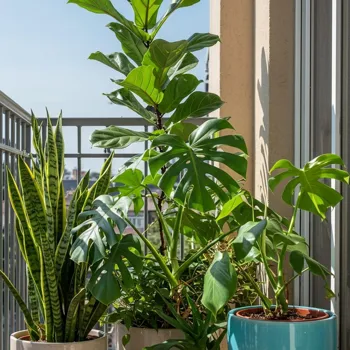
Water early in the morning or late in the evening to minimize water loss due to evaporation. Consider using a watering can or a soaker hose for even distribution. Rainwater harvesting can also be a great way to conserve water and provide your plants with natural, nutrient-rich water.
Remember, every drop counts!
Feed potted plants organic fertilizers regularly for healthy growth
Plants in pots need regular feeding as nutrients get washed away with watering. Use organic fertilizers like compost, vermicompost, or bone meal to provide essential nutrients for healthy growth. You can also use liquid fertilizers, but be sure to dilute them properly according to the instructions.
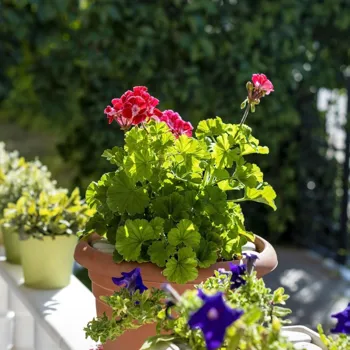
Fertilize your plants every two to three weeks during the growing season. Avoid over-fertilizing, as it can burn the roots of your plants. A little goes a long way!
Inspect plants for pests regularly; use natural controls like neem oil and marigolds
Nobody wants pests nibbling on their precious plants! Inspect your plants regularly for signs of pests like aphids, mealybugs, or caterpillars. For minor infestations, you can often simply wash them off with a strong stream of water.
For more persistent pests, use natural pest control methods like neem oil, insecticidal soap, or companion planting. Marigolds, for example, are known to repel many common garden pests. Avoid using harsh chemical pesticides, as they can harm beneficial insects and pollute the environment.
Let nature lend a helping hand!
Pruning is essential for plant health and growth
Pruning might seem scary, but it's essential for maintaining the health and shape of your plants. Remove dead, damaged, or diseased branches to prevent the spread of disease and encourage new growth. Pinch off the tips of growing stems to promote bushier growth and more flowers.
Prune flowering plants after they finish blooming to encourage a second flush of flowers. Use clean, sharp pruning shears to make clean cuts. Regular pruning will keep your plants looking their best and ensure a bountiful harvest.
Maximize terrace space with vertical gardening for more plants
Terrace space is precious, so make the most of it! Vertical gardening is a fantastic way to grow more plants in a limited space. Use trellises, hanging baskets, wall planters, or stacked planters to create a stunning vertical display.
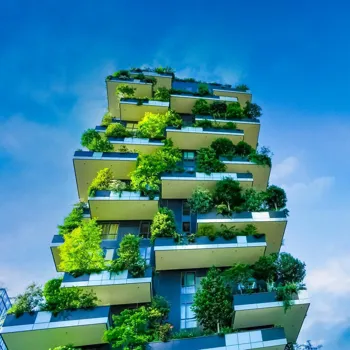
Grow climbing plants like money plant, bougainvillea, or beans on trellises. Hang herbs and flowers in baskets to add color and fragrance. Vertical gardening not only saves space but also adds visual interest to your terrace. Think upwards!
Mulch benefits your garden by retaining moisture and adding nutrients
Mulch is your terrace garden's best friend! It's a layer of organic material spread on the soil surface around your plants. Mulch helps to retain moisture, suppress weeds, regulate soil temperature, and add nutrients to the soil as it decomposes.
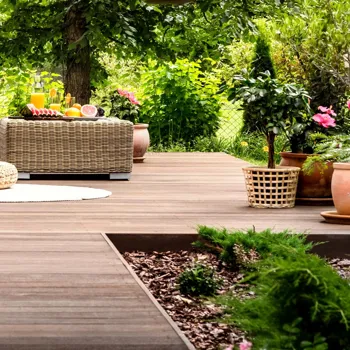
Use organic mulches like straw, wood chips, shredded leaves, or compost. Apply a 2-3 inch layer of mulch around your plants, keeping it away from the stems to prevent rot. Mulch is a simple but effective way to improve the health and productivity of your terrace garden.
Choose plants wisely based on Indian climate for success
Not all plants can handle the Indian climate. Think about the local weather before selecting your plants. If it's hot and sunny, go for plants like hibiscus and bougainvillea that are drought-resistant. If it's cooler, think about plants that like the shade like ferns and hostas.
Plants like tomatoes, chillies, basil, and even certain types of gourds thrive in the Indian climate.
Native plants are already adapted to the local climate, soil conditions, and pests. They require less water, fertilizer, and pest control than non-native plants. Growing native plants also supports local biodiversity and provides habitat for native insects and birds. Do some research to find out which plants are native to your area and incorporate them into your terrace garden. You'll be rewarded with a thriving garden that's both beautiful and sustainable. Embrace local flora!
Following these ten tips will help you create a thriving terrace garden in the heart of urban India. So, get your hands dirty, and start gardening! With a little effort and patience, you'll be enjoying fresh herbs, vegetables, and flowers from your own little oasis in no time. Happy gardening!
AI Generated Content. Glance/InMobi shall have no liability for the content
